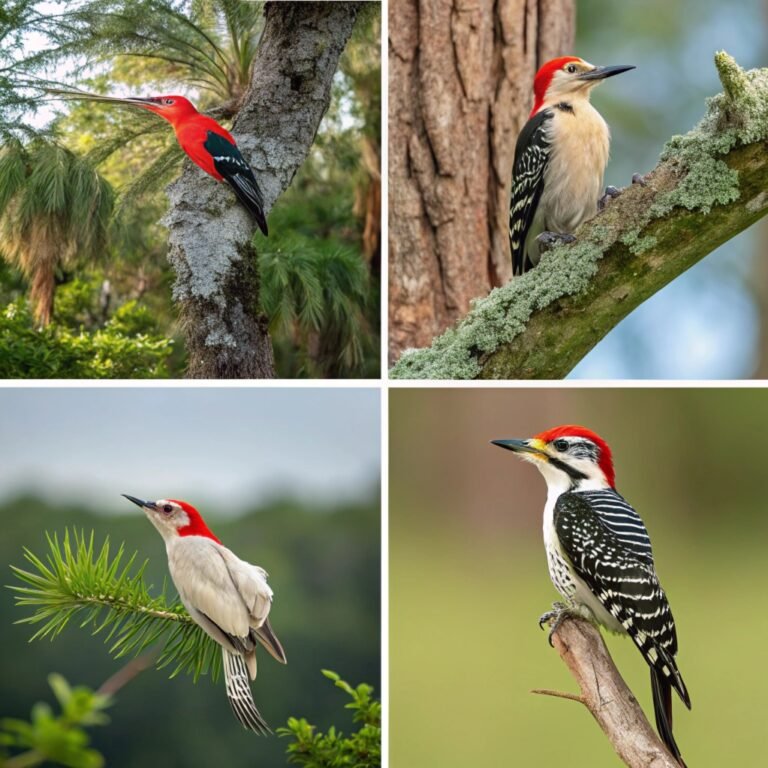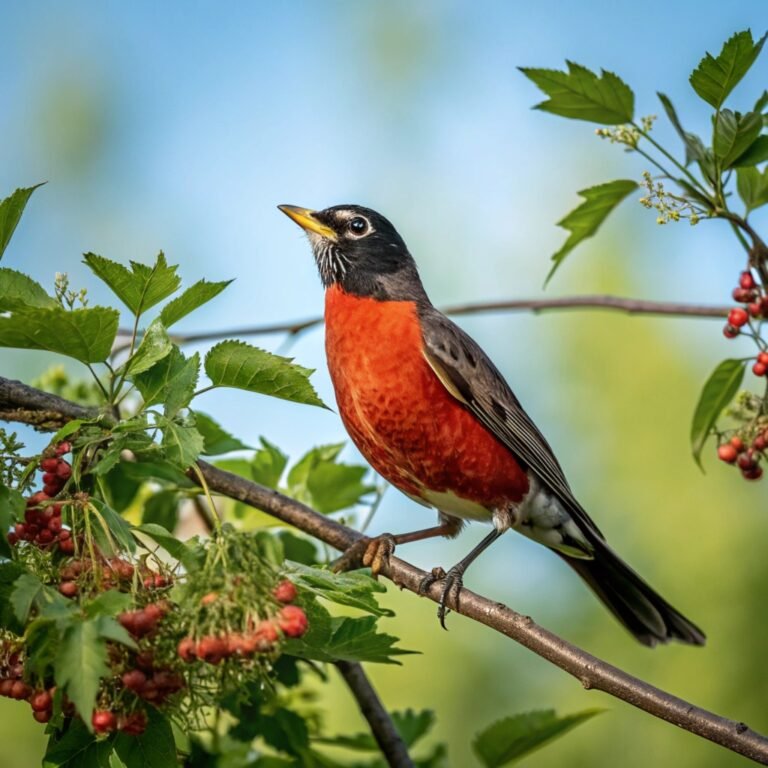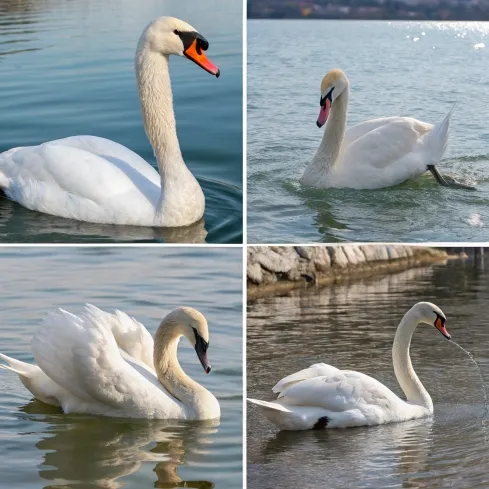The Amazing World of Pink Peacocks: Myths, Realities, and Beauty of Pink Peacocks
Pink peacocks have captured the imagination of people worldwide, representing a fascinating blend of beauty, mystery, and fantasy.
These stunning creatures have become the subject of numerous myths, artistic representations, and even scientific debates.
In this comprehensive exploration, we’ll delve into the captivating world of pink peacocks, separating fact from fiction and uncovering the true beauty of these magnificent birds.
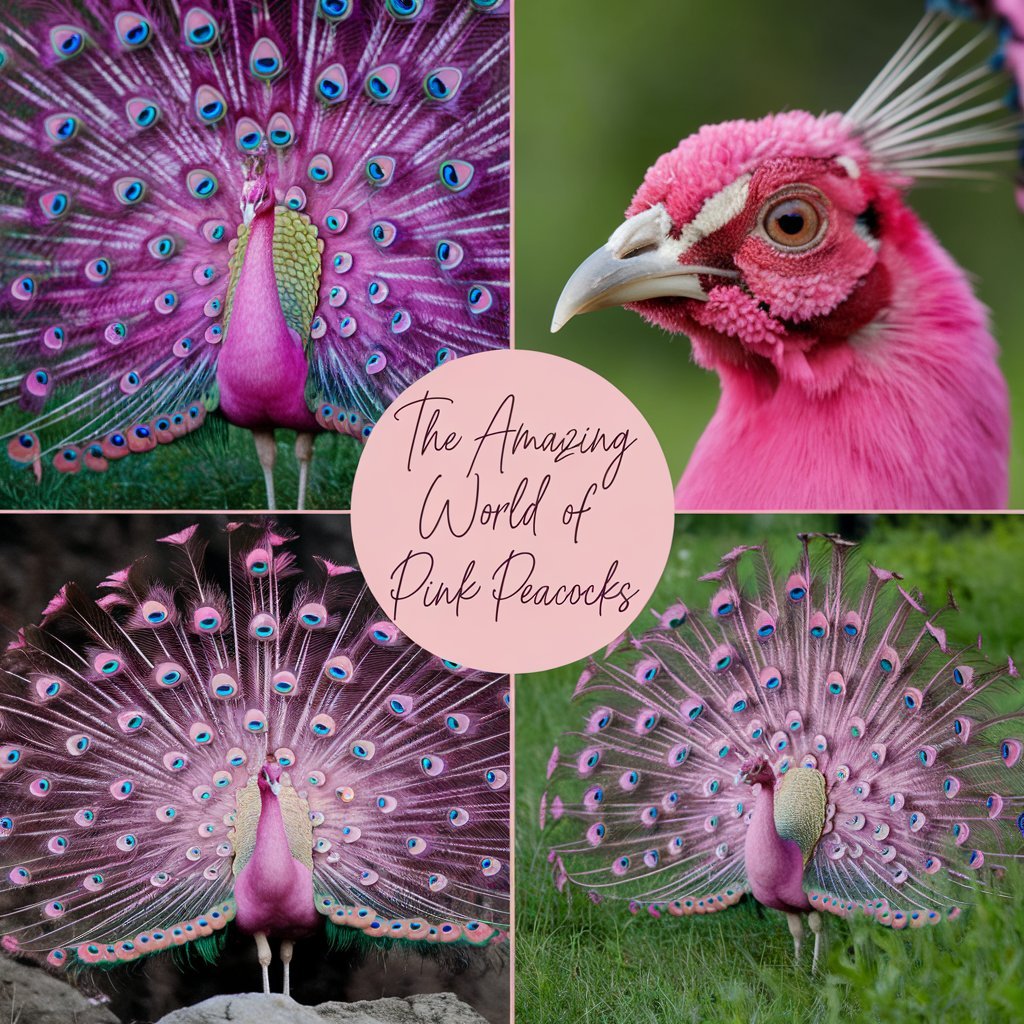
Key Takeaways
- Pink peacocks do not exist in nature. The concept is largely a myth perpetuated by digitally altered images and artistic representations.
- There are three main species of peafowl: Indian Peafowl, Green Peafowl, and Congo Peafowl. None of these naturally occur in pink.
- The vibrant colors of peacock feathers are due to both pigmentation and structural coloration. The microscopic structure of the feathers refracts light, creating iridescent effects.
- White peacocks are real and occur due to a genetic condition called leucism. They are often used as a base for creating images of pink peacocks through digital manipulation.
- Natural color variations in peacocks include white, pied, black shoulder, and peach. The peach variation is the closest to pink in natural peacocks.
- Some breeders have attempted to create pinkish peacocks through selective breeding, but these efforts have not resulted in truly pink birds.
- Artificial coloring methods to create pink peacocks are controversial and often considered unethical.
- The magnificent train of male peacocks, used in courtship displays, is actually made up of elongated upper tail coverts, not true tail feathers.
- Peacocks play important ecological roles in their habitats, including seed dispersal and insect control.
- Conservation efforts are crucial for protecting peacock populations, especially for species facing threats like habitat loss and hunting.
- While pink peacocks may be a myth, natural peacocks display stunning beauty and fascinating biological adaptations that are well worth appreciating and protecting.
- The popularity of the pink peacock myth highlights our fascination with rare and exotic creatures, even if they only exist in our imagination.
- Understanding the science behind peacock coloration can enhance our appreciation for the true beauty of these magnificent birds.
- The myth of pink peacocks serves as a reminder of the importance of critical thinking and fact-checking in the age of digital media and image manipulation.
- Appreciating the natural diversity of peacocks can be just as rewarding as imagining fantastical color variations, encouraging a deeper connection with the real wonders of the natural world.
The Allure of Pink Peacocks
The idea of a pink peacock is undeniably captivating. The soft, delicate hue of pink combined with the majestic form of a peacock creates an image of unparalleled beauty and grace. This allure has led to the widespread popularity of pink peacocks in art, literature, and popular culture.
Pink peacocks have become symbols of fantasy and exoticism, often featured in children’s books, fantasy art, and even fashion designs. The concept of a pink peacock appeals to our sense of wonder and imagination, representing something rare, precious, and almost magical.
The Reality of Peacock Colors
To understand the myth of pink peacocks, we must first explore the true colors of these magnificent birds. In nature, peacocks display a stunning array of hues, but pink is not among them.
Natural Peacock Species and Colors
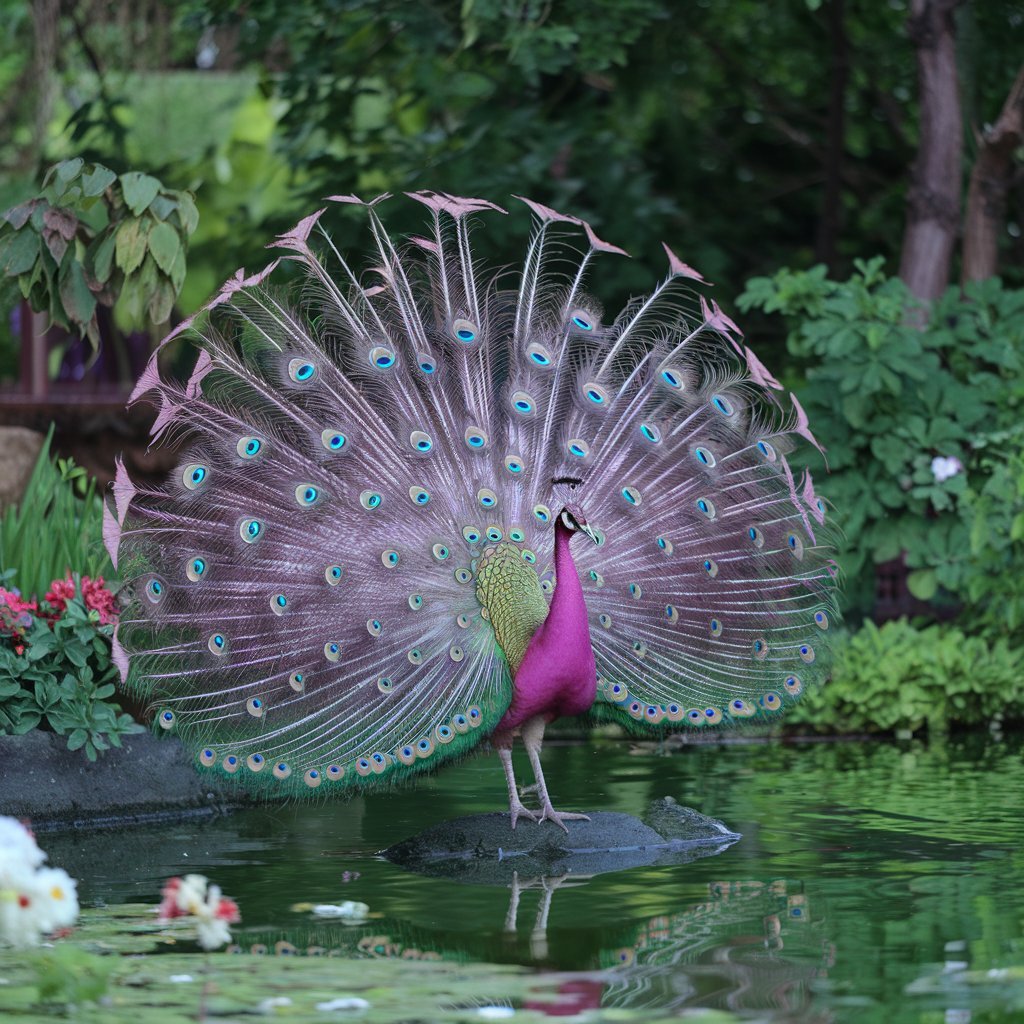
There are three main species of peafowl:
- Indian Peafowl (Pavo cristatus): The most common and well-known species, featuring iridescent blue and green plumage.
- Green Peafowl (Pavo muticus): Native to Southeast Asia, with green and bronze or gold plumage and black wings with a blue sheen.
- Congo Peafowl (Afropavo congensis): Found in the Congo Basin, with shorter tail feathers and less pronounced ocelli compared to its Asian counterparts.
The male Indian peacock is particularly famous for its vibrant blue and green feathers, which form the iconic train used in courtship displays. The feathers are marked with eyespots, or ocelli, best seen when the peacock fans its tail.
Female peafowl, or peahens, typically have more subdued coloration. The Indian peahen, for example, has a mixture of dull grey, brown, and green in her plumage.
The Science Behind Peacock Colors
The dazzling colors of peacock feathers are not just a result of pigmentation but also due to the microscopic structure of the feathers themselves.
Structural Coloration
Peacock feathers exhibit what’s known as structural coloration. This means that their colors are produced by the physical structure of the feather rather than by pigments alone. The feathers contain nanoscale structures that refract and scatter light in specific ways, creating the iridescent effect we see.
These structures are arranged in such a way that they selectively reflect certain wavelengths of light while absorbing others. This is why peacock feathers can appear to change color when viewed from different angles or under different lighting conditions.
The Pink Peacock Myth
Given the scientific understanding of peacock coloration, where does the idea of pink peacocks come from?
Origins of the Myth
The pink peacock myth likely originated from a combination of factors:
- Digital Manipulation: Many images of pink peacocks circulating online are digitally altered versions of white peacocks.
- Artistic Representations: Pink peacocks are often featured in fantasy art and children’s literature, further popularizing the concept.
- Misinterpretation of Natural Variations: Some color variations in peacocks, such as peach or light-colored individuals, might be misinterpreted as pink under certain lighting conditions.
The Role of White Peacocks
White peacocks play a significant role in the pink peacock myth. These birds are not a separate species but rather a color variation of the Indian Peafowl. They occur due to a genetic condition called leucism, which causes a partial loss of pigmentation.
White peacocks are often used as the base for creating images of pink peacocks through digital manipulation. Their lack of color makes them an ideal canvas for such alterations.
Exploring Color Variations in Peacocks

While true pink peacocks don’t exist in nature, peacocks do exhibit a fascinating range of color variations.
Natural Color Mutations
Several color mutations occur naturally in peacocks:
- White: Caused by leucism, resulting in all-white plumage.
- Pied: A partial leucistic condition, creating a mix of white and colored feathers.
- Black Shoulder: A genetic mutation that affects the coloration of the wings and back.
- Peach: A diluted version of the typical blue and green coloration, sometimes appearing slightly pinkish under certain light.
The Peach Peacock
The peach peacock is perhaps the closest naturally occurring variation to a pink peacock. These birds have a diluted coloration that can appear slightly pinkish or peachy, especially in certain lighting conditions.
However, it’s important to note that peach peacocks are not truly pink. Their coloration is still based on the typical blue and green pigments, just in a more muted form.
Artificial Creation of Pink Peacocks
While pink peacocks don’t occur naturally, some breeders have attempted to create peacocks with pink-like plumage through selective breeding and other methods.
Selective Breeding
Some breeders have experimented with crossing different color mutations in an attempt to produce peacocks with pinkish hues. For example, breeding a peacock with a red mutation with one carrying a white mutation might result in offspring with a more pinkish appearance.
However, these attempts have not resulted in truly pink peacocks. The resulting birds may have a slightly pinkish tint, but they do not display the vibrant pink color often depicted in artistic representations.
Artificial Coloring
In some cases, breeders have resorted to artificial coloring methods to create pink peacocks. This might involve dyeing the feathers of white peacocks or using other techniques to alter their appearance.
It’s important to note that such practices are controversial and often considered unethical. They do not result in naturally pink peacocks and can potentially harm the birds.
The Beauty of Natural Peacocks
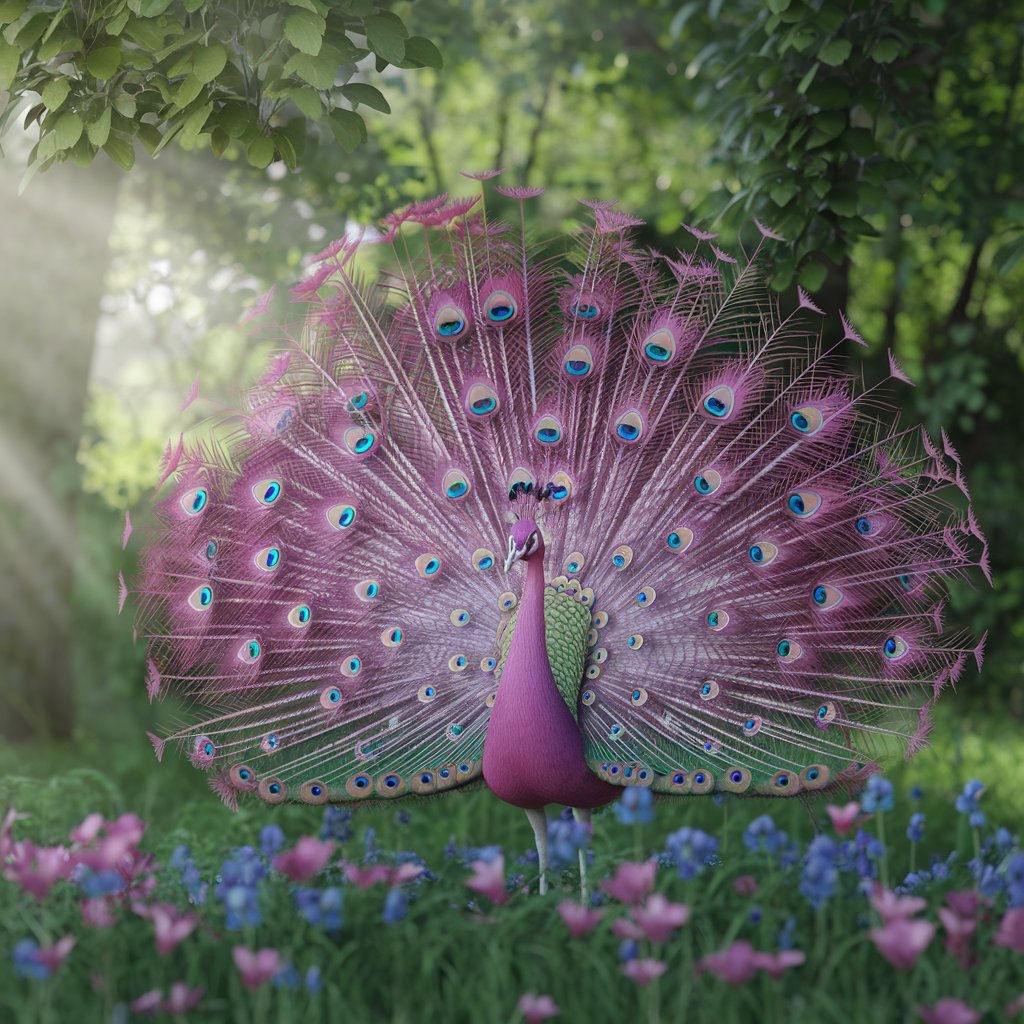
While the idea of pink peacocks is captivating, the natural beauty of peacocks is truly awe-inspiring.
The Magnificent Train
The most striking feature of male peacocks is their elaborate train. This isn’t actually the tail, but rather a collection of elongated upper tail coverts. When fanned out during courtship displays, the train creates a spectacular semicircle of iridescent feathers, each adorned with an eye-like ocellus.
Iridescence and Color-Changing Effects
The iridescent nature of peacock feathers means they appear to change color as the viewing angle or lighting changes. This creates a mesmerizing effect, with the feathers seeming to shimmer and shift between various hues of blue, green, and gold.
Cultural Significance
Peacocks have held significant cultural importance in many societies throughout history. In India, the peacock is the national bird and is considered sacred in several religions. The bird’s beauty and grace have made it a popular subject in art, literature, and mythology across various cultures.
The Role of Peacocks in Nature
Beyond their aesthetic appeal, peacocks play important roles in their natural ecosystems.
Ecological Function
Peacocks are omnivorous birds that feed on a variety of plants, seeds, insects, and small animals. This diverse diet helps them play a role in seed dispersal and insect control in their habitats.
Courtship and Reproduction
The famous peacock display is not just for human admiration. It plays a crucial role in peacock courtship rituals. Male peacocks use their magnificent trains to attract females, with the size, color, and pattern of the train potentially indicating the male’s fitness and genetic quality.
Conservation of Peacocks
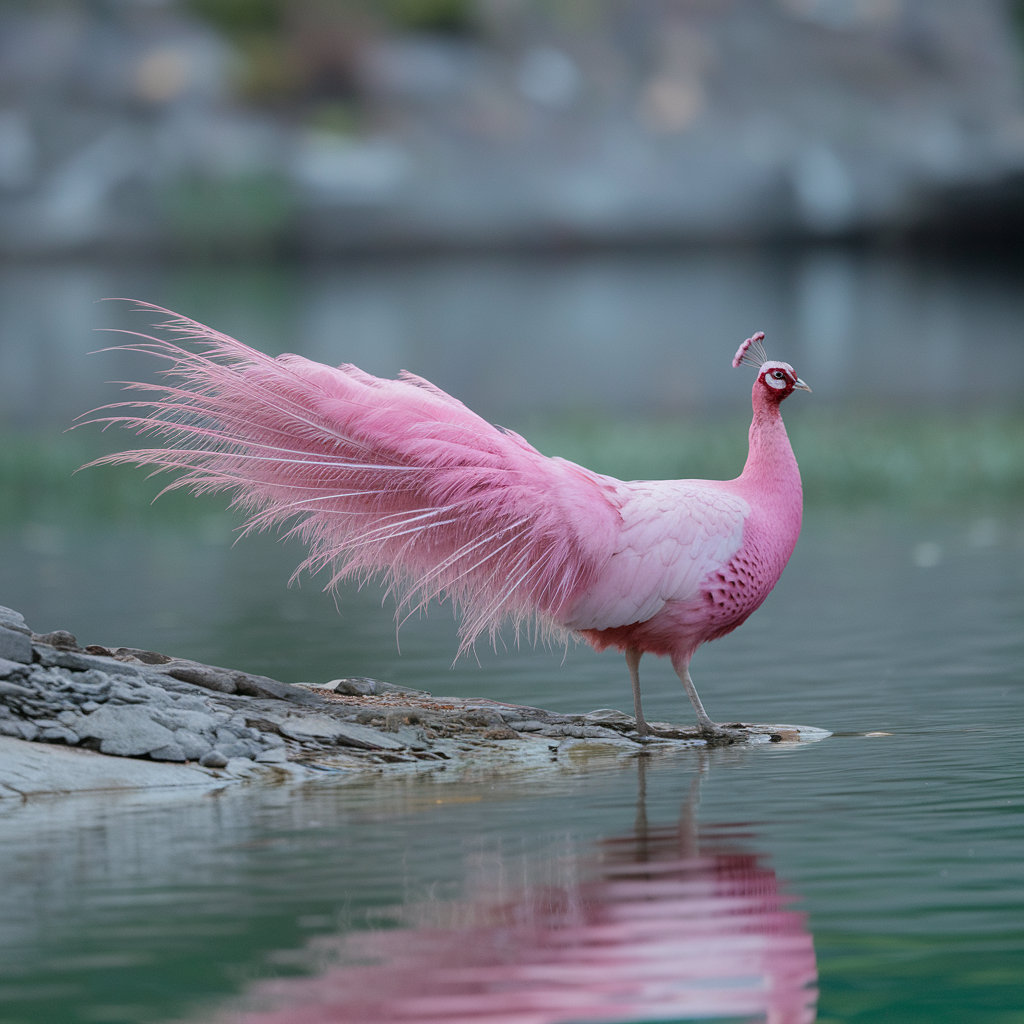
While the Indian Peafowl is not currently considered threatened, other peacock species face conservation challenges.
Threats to Peacock Populations
Some of the threats facing peacock populations include:
- Habitat Loss: Deforestation and urbanization are reducing the natural habitats of peacocks.
- Hunting: In some areas, peacocks are hunted for their meat or feathers.
- Climate Change: Changing climate patterns can affect the availability of food and suitable habitats for peacocks.
Conservation Efforts
Various conservation efforts are underway to protect peacock populations:
- Habitat Protection: Establishing and maintaining protected areas where peacocks can thrive.
- Breeding Programs: Captive breeding programs help maintain genetic diversity and bolster wild populations.
- Education: Raising awareness about the importance of peacock conservation and their role in ecosystems.
FAQs About Pink Peacocks
Are there really pink peacocks in nature?
No, there are no naturally occurring pink peacocks. The idea of pink peacocks is largely a myth, perpetuated by digitally altered images and artistic representations.
What is the closest color to pink in natural peacocks?
The peach peacock, a color variation of the Indian Peafowl, is perhaps the closest to pink in natural peacocks. However, it’s more of a diluted version of the typical blue and green coloration rather than a true pink.
Can peacocks be bred to be pink?
While some breeders have attempted to create peacocks with pinkish hues through selective breeding, these efforts have not resulted in truly pink peacocks. The resulting birds may have a slightly pinkish tint, but they do not display the vibrant pink color often depicted in artistic representations.
Why are there so many images of pink peacocks online?
Many images of pink peacocks circulating online are digitally altered versions of white peacocks. The popularity of these images has contributed to the myth of pink peacocks.
What colors do peacocks naturally come in?
Natural peacock colors include iridescent blue and green in Indian Peafowl, green and bronze in Green Peafowl, and more subdued colors in Congo Peafowl. Color variations like white, pied, and black shoulder also occur naturally.
How do peacocks get their vibrant colors?
Peacock feathers get their vibrant colors through a combination of pigmentation and structural coloration. The microscopic structure of the feathers refracts light in specific ways, creating the iridescent effect we see.
Are white peacocks rare?
White peacocks are less common than the typical blue and green peacocks, but they’re not extremely rare. They occur due to a genetic condition called leucism, which causes a partial loss of pigmentation.
Can peacocks change their color?
Peacocks cannot change their color at will. However, their iridescent feathers can appear to change color when viewed from different angles or under different lighting conditions due to the structural nature of their coloration.
Are there any other unusually colored peacocks?
Besides the typical blue and green, peacocks can naturally occur in variations like white, pied (a mix of white and colored feathers), black shoulder, and peach. However, these are all variations of the existing peacock species and not separate species themselves.
How long do peacocks live?
In the wild, peacocks typically live for about 10 to 25 years. In captivity, with proper care, they can live even longer, sometimes up to 40 or 50 years.

Hello, I’m Emily Price, the founder of Birds Affection. As a passionate bird enthusiast and spiritual seeker, I’ve always been fascinated by the symbolic meanings and mystical connections between birds and our lives. On this website, I share my knowledge and insights on the spiritual significance of various bird species, exploring their roles as messengers, guides, and teachers. Through my writing, I aim to inspire and educate others on the profound wisdom and beauty that birds bring to our world. Join me on this journey as we delve into the enchanting realm of bird symbolism and discover the hidden meanings behind these magnificent creatures.



